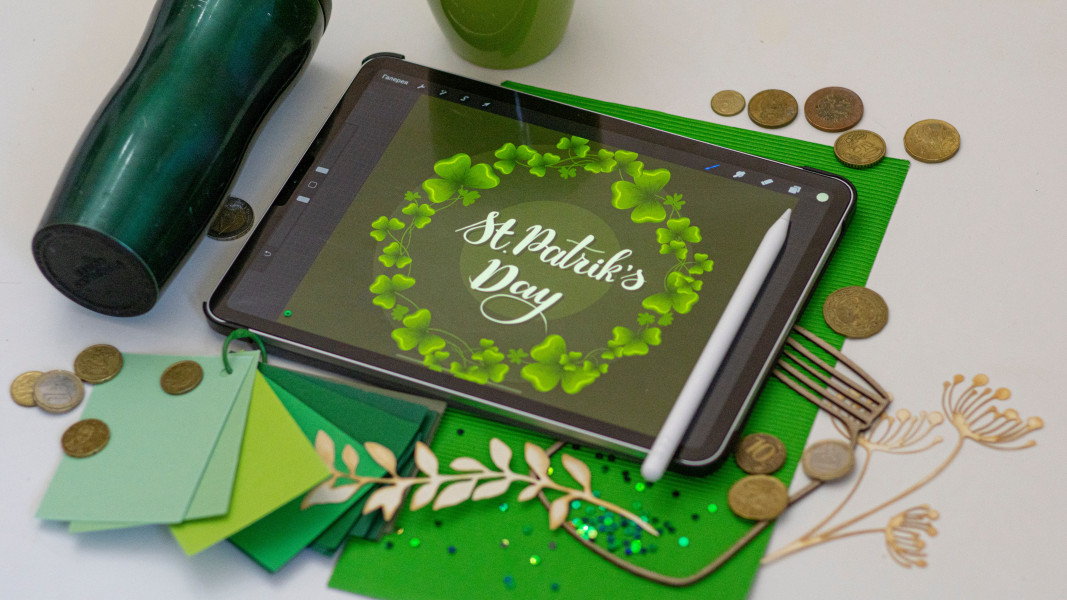How The Holiday Was Born
Ireland's patron saint is Saint Patrick. The saint is said to have been born in or around 385 AD in Britannia, a former Roman province that is now Great Britain. Roman citizens serving in Britain were his parents.
He was abducted as a child when he was 14 years old and taken to Ireland, where he was forced to herd sheep for six years. He had a vision one day that showed him how to return to the realms of modern-day England.
Patrick, a teenage slave in Ireland, had a profound spiritual awakening that inspired him to subsequently go back to the pagan Irish people as a missionary. He brought the Latin alphabet to Ireland and preached Christianity while using it. (In this, does St. Patrick not bear some resemblance to the saintly brothers Cyril and Methodius?)
Saint Patrick's feast day is observed on March 17, as his death is thought to have occurred on that date in 461.
Legend has it that Saint Patrick illustrated the oneness of the Holy Trinity—Jesus, the Holy Spirit, and God—using a three-leaf clover. Today, the shamrock serves as the Irish people's national emblem.
The shamrock's green tint serves as the Irish people's flag. St. Patrick's Day is known for its shamrock and is celebrated by donning green clothing, consuming green food, and consuming green beer.
The custom of dipping the shamrock on one's lapel or hat into the evening's final drink is also prevalent. Shamrock drowning is the term for this. When the last cup has been consumed, the clover is removed and either eaten or flung over one's shoulder for good luck (probably also for good luck).
The Symbols Of The Holiday
St. Patrick's Day originated as a cultural and religious Irish holiday. His symbol is the three-leaf clover and leprechauns.
The clovers
Shamrocks are so associated with Ireland that they are considered a symbol of the country.
Originally, the three-leaf clover was associated with the three aspects of the life of the Celtic goddess Anu (Anna) - maiden, mother and old woman.
About one in 10,000 clovers have four leaves. In 2009, a 56-leaf clover was found in Japan.
The popular three-leaf clover is actually the creeping or white clover plant. The four-leaf clover is a rare or mutated version. Shamrocks with five or more leaves are also found, but they are even rarer. The original Irish name of the plant means "little clover". Moreover, modern Irish brides still follow the tradition of putting shamrocks in the wedding bouquet.
Clover is easy to grow at home. If a seed or tuber is planted in early January, by St. Patrick's Day they will have put forth tender stalks. Not only that, but nowadays people get all kinds of green
St Patrick’s flower arrangements to decorate their homes or surprise their family and friends.
In 2002 in Australia, clover was classified as a weed and banned as a possible vector of foot and mouth disease.
The leprechauns
Leprechauns, mythological creatures from Irish folklore, are usually depicted as playful little creatures with green robes and ginger beards.
However, the early leprechauns looked quite different from the men who, on today's holiday, dress in green and flock to pubs to drink Guinness.
The original "bearded fairies" wore red jackets embroidered with gold, red pointed hats rather than green top hats adorned with clover, and had white or chestnut beards rather than ginger.
Leprechauns were not as friendly as they were made out to be. An eighth-century poem marks their first appearance. The work tells how while King Fergus was asleep, small angry creatures tried to sneakily drag him into the ocean and drown him. However, their intentions were foiled by the ruler, who woke up and caught them.
Leprechauns don't even live in Ireland. According to early tales, these creatures inhabited an underwater kingdom in the Mid-Atlantic. Even today, they are not confined to Ireland - a colony of leprechauns is believed to inhabit a city park in Portland, Oregon.
All leprechauns are male. According to Irish folklore, female leprechauns do not exist. The existence of only males is also confirmed by the ancient book History of the Irish Fairies. The question of the reproduction of mythological creatures remains unclear. Some people believe that leprechauns are the "defective offspring" of fairies. Others think the creatures are the result of unions between humans and fairies.
Leprechauns are unlikely to give you gold or mend your shoes if you capture them. Notions that they owned pots of gold and repaired shoes came much later. A 14th-century poem inspired the belief in the treasures of the mythological creatures, and their "shoemaking" was first mentioned only around the 19th century.
Leprechauns were smaller than thought. If you meet a leprechaun, you'll probably step on it before you even hear it crack jokes in its adorable Irish accent. According to legend, when one of these mythological creatures arrived at the court of King Fergus, the courtiers attempted to drown it in a cup of wine.
We hope that you learned something new about this day and helped you celebrate it accordingly!

